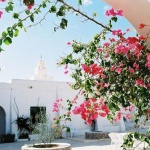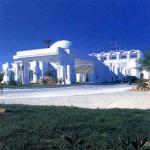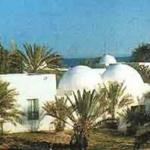Description Djerba, Tunisia
 Djerba Island - the land of legends and the island of date palms. Legends say that this island is visited Odyssey. His sailors were captivated by the beauty of the island and did not want to leave this heavenly place. Landscapes unusually picturesque island, nature is truly beautiful, and the roads are interwoven in an endless maze. The sand on the beaches of surprisingly white, the sea - crystal clear. Driving along the coast, you can see flocks of pink flamingos, which are not afraid of human presence.
Djerba Island - the land of legends and the island of date palms. Legends say that this island is visited Odyssey. His sailors were captivated by the beauty of the island and did not want to leave this heavenly place. Landscapes unusually picturesque island, nature is truly beautiful, and the roads are interwoven in an endless maze. The sand on the beaches of surprisingly white, the sea - crystal clear. Driving along the coast, you can see flocks of pink flamingos, which are not afraid of human presence. Located in the south of Tunisia in the semidesert zone, the island of Djerba is 538 square. km and its coastline stretches for 120 km. The island can be reached in three ways: either by "Roman" road or by ferry (which takes 10 minutes), or you can use the air traffic and Tunisia Monastir international airport of Djerba.
Djerba - the largest island off the coast of Mediterranean Youth of Africa, located in the Gulf of Gabes.
The history of the island goes into the distant past. Legend has it that this is the same one sung in ancient myths Ogygia Island, where a beautiful nymph Calypso kept Odysseus for seven years, trying to get his love. This, however, did not help even four sons, whom she bore from him. Odysseus still returned to his Penelope, and Djerba, however, as the Maltese island of Gozo, Spanish Mallorca and Menorca - has become one of the legendary pages of world history.
Opened Djerboue, apparently, known marine vagrants Phoenicians, who carried away the purple paint. After them, the island owned by the Carthaginians, then the Romans, is laid on a narrow isthmus of the stone road to the town located on the continent Zarzis.
In the creation of the island's history have put its contribution to the Berbers, Jews, Turks, Sicilians, Spaniards, Normans ... Here in the XVI century. was one of the bases of the legendary Droguta Reis, who was in the Tunisian folklore called "Sirte falcon. For some it was a bloody pirate, who in 1560 erected a terrible tower Burj al-Rus from the skulls of the five thousand Christians who were captured during the battle for the island to the other - a brave fighter for independence from Spanish rule. Tower Burj al-Rus stood until 1848, after which the remains of Christians were moved to the European cemetery.


